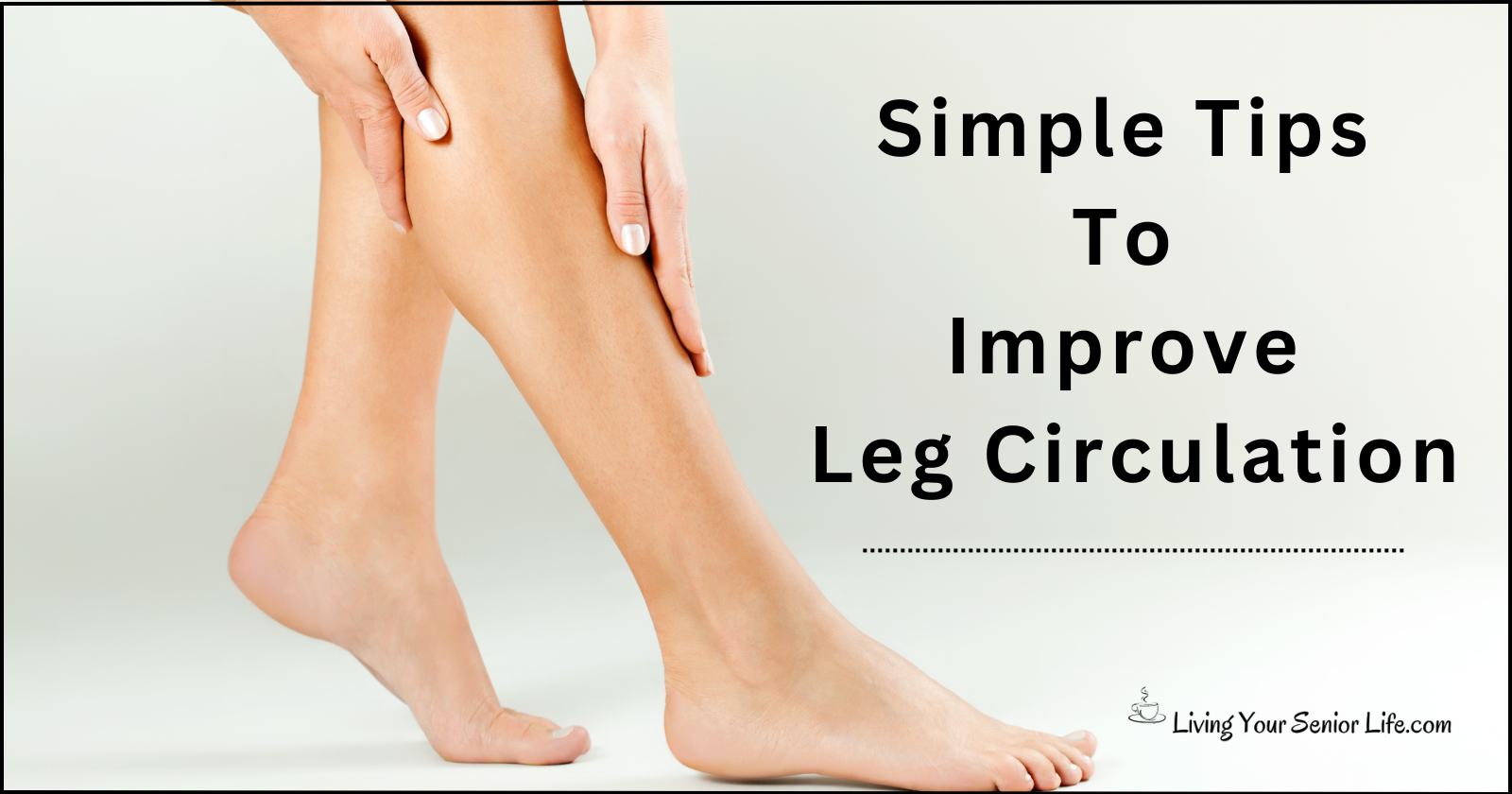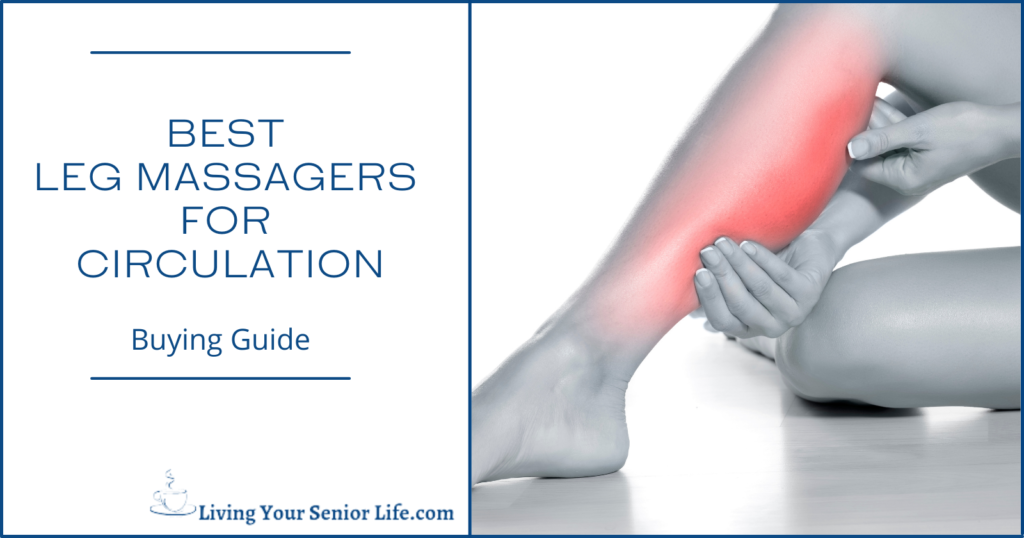This post is for informational purposes only and should not be used in place of the advice of a medical professional.
If you’re experiencing tired and achy legs, poor leg circulation may be the culprit. This common problem can be caused by a variety of factors, including lifestyle and health conditions. Fortunately, there are several ways to improve leg circulation, ranging from simple lifestyle changes to medical interventions.
Before diving into tips for improving leg circulation, it’s important to first understand what poor leg circulation is, its possible causes, and symptoms. By gaining a better understanding of this condition, you can take steps to improve your leg circulation and reduce discomfort.
Before looking at the tips on how to improve leg circulation, let’s take a few moments to understand poor leg circulation, its possible causes, and symptoms.
Key Takeaways:
- Identifying the symptoms and causes of poor leg circulation is the first step toward improving vascular health.
- Simple lifestyle adjustments and medical interventions can help enhance circulation in the legs.
- Being informed about your circulatory system aids in making decisions that positively impact leg circulation and overall well-being.
What Is Poor Leg Circulation?
Poor leg circulation occurs when there is a constriction or blockage in the blood flow from your legs to your heart. This condition is also known as peripheral artery disease (PAD). Factors like arterial plaque buildup and venous insufficiency are primary causes, affecting the lower extremities and potentially escalating to chronic venous insufficiency.
What Causes Poor Leg Circulation?
Poor leg circulation can be caused by a variety of factors. Some of the most common causes include sitting for extended periods of time, dehydration, obesity, smoking, and not getting enough exercise. Wearing tight clothes and high heels can also contribute to leg circulation problems. Additionally, health conditions such as high blood pressure, diabetes, atherosclerosis, and peripheral artery disease (PAD) can all lead to poor leg circulation.
It is important to maintain a healthy diet rich in nutrients and low in saturated fats and salt, manage stress levels, and avoid smoking and excessive alcohol consumption to help improve leg circulation.
Video: 5 Simple Tips To Improve Leg Circulation
Symptoms of Poor Leg Circulation
Indicators of Inadequate Leg Blood Flow
Symptoms you might notice:
- Heaviness or quick onset of fatigue in the legs
- Challenges with walking or climbing stairs
- Pain in the legs, intensifying with physical activity
- Cramping in your leg muscles, often at night
- Pale skin appearance on legs
- Feet or toes that change color or feel abnormally cold
- Ankles and feet swelling
Should these signs appear, consider discussing with a healthcare provider about potential circulatory system issues like varicose veins, peripheral artery disease, or deep vein thrombosis. Addressing risk factors, embracing lifestyle changes, and seeking advice on treatment options can support better circulation and overall vascular health.
Factors Influencing Circulation in the Lower Extremities
Circulation issues in the lower legs can arise from various sources, notably:
- Lifestyle Choices: Extended sedentary periods and unhealthy habits like inhaling cigarettes or consuming smokeless tobacco can lead to circulation complications.
- Diet: High intake of saturated fats, red meat, salt, and excess alcohol can escalate high blood pressure and atherosclerosis, thickening arteries with plaque buildup.
- Health Conditions: Diseases such as diabetes elevate blood sugar, affecting arteries, while heart disease compromises the delivery of oxygen and removal of carbon dioxide.
- Physical Factors: Obesity can strain circulation, and aging may naturally diminish vascular efficiency.
Tips For Helping Circulation in the Legs
Tip #1 – Frequent Standing

Make it a habit to get up at least every 20 minutes, particularly if you sit for extended periods. This simple action can energize your legs by promoting blood flow and improve the overall health of your legs. If you have a desk job, try to do some light exercises at your desk throughout the day. Walking around the office every hour or so and taking a break from sitting in your chair can also help. Avoid sitting for long periods of time with crossed legs or one leg tucked under you.
Tip #2 – Loose Clothing

Wearing tight clothes can constrict blood flow and make it more difficult for your blood to circulate throughout your body. Wear loose-fitting clothes around the waist area and remove tight belts if necessary. Wearing pants with a looser waistband will help keep leg circulation healthy.
Tip #3 – Compression Socks/Stockings
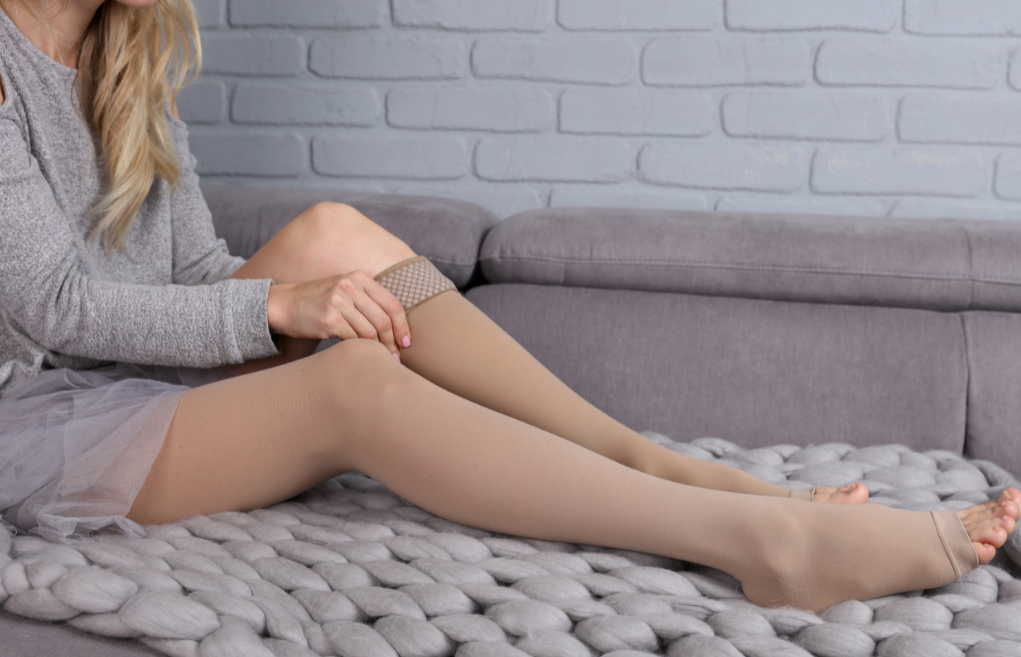
Compression socks are an easy way to improve your leg circulation. They help to improve blood flow and keep the legs feeling energized. They are also effective at reducing swelling and discomfort in the legs.
To get the most out of your compression socks, make sure to wear them every day. You may also want to consider wearing compression stockings when you travel or sit for long periods of time.
When shopping for compression stockings, be sure to look for a brand that fits you properly. If the socks are too tight, they will not be effective at improving circulation. Look for a brand that fits you properly and is made with a blend of cotton, nylon, and elastic to improve circulation. This material is breathable and will help improve circulation as you go about your day.
Tip #4 – Be Active
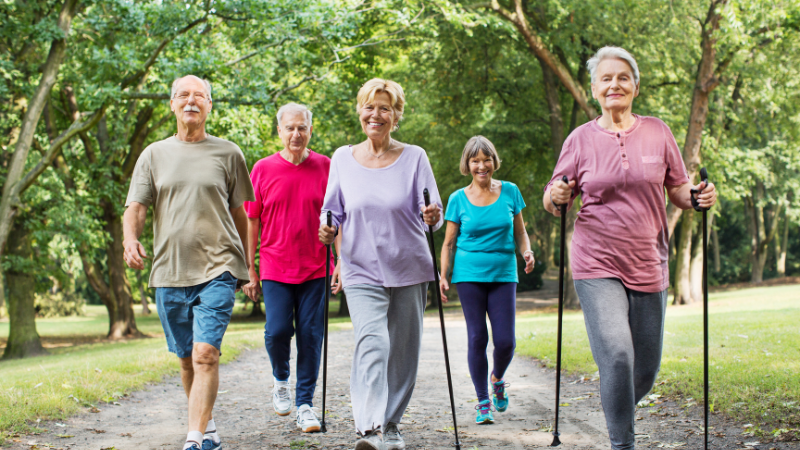
Exercise is a great way to improve leg circulation. Moving about as much as reasonably possible throughout the day is recommended. Try to stand up out of your chair regularly or pace while talking on the phone. Taking a leisurely walk every day is also a great way to improve leg circulation. Stretching regularly is a great way to improve poor blood circulation and keep your muscles flexible. Make sure to target the muscles in your legs with some of the stretches that are most commonly practiced. Add in some cardio, such as walking or swimming, for about 30 minutes per day to see the best results.
Exercises Designed to Boost Leg Circulation
Physical activity is one of the best ways to enhance blood flow. Try these exercises for your lower body:
- Walking briskly engages leg muscles and promotes efficient blood flow.
- Leg lifts and cycling can strengthen the entire body while specifically targeting the lower extremities.
- For lower legs, calf raises and seated leg stretches support good blood circulation.
- Yoga poses like the downward dog offer benefits for your overall health, including your circulatory system.
Read Next: Types of Cardio For Seniors
Tip # 5 – Maintain Fluid Intake

Dehydration can lead to a decrease in blood flow, which in turn can lead to a number of problems, including poor leg circulation.
When the blood flow is hindered, it can be difficult for your body to get the oxygen and nutrients it needs to function properly. This can cause problems such as fatigue, muscle pain, cramps, and even swelling.
If you are experiencing any of these symptoms, it is important to take steps to improve your hydration levels. Drinking plenty of fluids throughout the day, including water, juice, and sports drinks, to stay hydrated is essential.
It is also essential to eat foods that are high in water content, such as fruits and vegetables.
Tip #6 – Elevate Your Legs
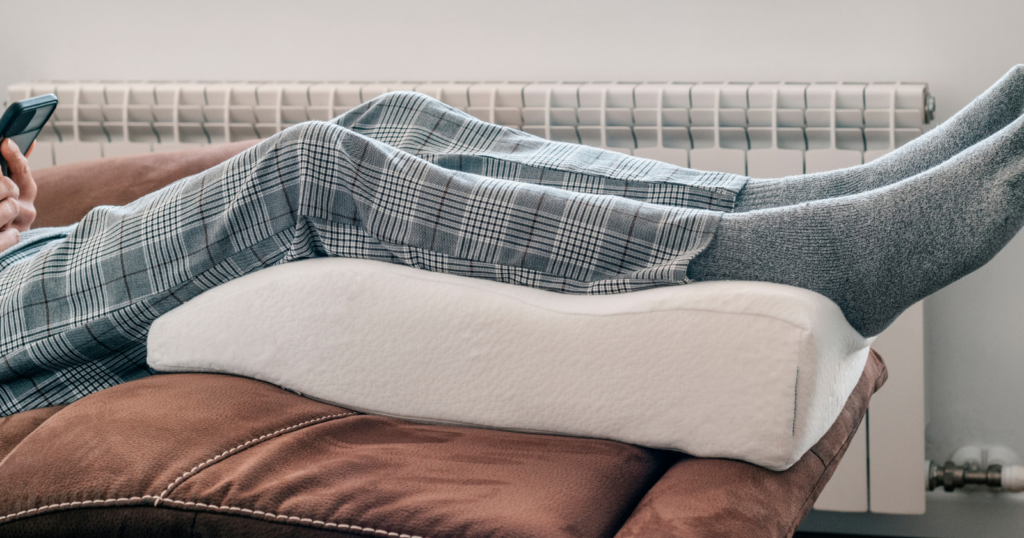
Prop your legs up to heart level periodically to improve blood return from the lower extremities to your heart. Elevating your legs is a simple yet highly effective technique to improve leg circulation and overall vascular health. By raising your legs above the level of your heart, gravity assists in facilitating blood flow back towards your heart. Here’s how elevating your legs can benefit your circulation:
- Enhanced Blood Flow: When you elevate your legs, gravity helps blood to flow more easily from your lower extremities back to your heart. This reduces the pressure on the veins in your legs, promoting better circulation throughout your body.
- Reduced Swelling: Prolonged sitting or standing can cause fluid to accumulate in your legs, leading to swelling and discomfort. Elevating your legs helps to alleviate this swelling by encouraging excess fluid to drain away, reducing edema and promoting better circulation.
- Relief from Leg Fatigue: If you often experience tired, achy legs, elevating them can provide much-needed relief. By improving circulation and reducing swelling, elevating your legs can help alleviate the symptoms of fatigue and discomfort associated with poor circulation.
- Prevention of Varicose Veins: Varicose veins occur when blood pools in the veins, causing them to bulge and become twisted. Elevating your legs can help prevent varicose veins by reducing the pressure on the veins and promoting better blood flow, thus reducing the risk of blood pooling and vein damage.
- Improved Healing: Whether you’re recovering from an injury or just looking to speed up muscle recovery after a workout, elevating your legs can help. By increasing blood flow to the area, elevating your legs promotes faster healing by delivering essential nutrients and oxygen to the tissues.
You can elevate your legs by lying down and propping them up on pillows or by using a footstool or ottoman while sitting. Aim to elevate your legs for at least 15-30 minutes several times a day to reap the full benefits of this easy and effective circulation-boosting technique.
Tip #7 – Adopt a Heart-Healthy Diet

Incorporate foods rich in omega-3 fatty acids, antioxidants, and fibers like fish, nuts, fruits, and green tea to maintain cardiovascular health and assist in preventing buildup in arteries.
Here’s how a heart-healthy diet can positively impact leg circulation:
Reduced Risk of Atherosclerosis: Atherosclerosis is a condition where fatty deposits, cholesterol, and other substances build up in the arteries, narrowing them and restricting blood flow. By consuming a diet low in saturated fats, trans fats, and cholesterol, and rich in fruits, vegetables, whole grains, and lean proteins, you can help prevent the development of atherosclerosis, ensuring better blood flow to your legs and throughout your body.
Lower Blood Pressure: High blood pressure (hypertension) can strain the arteries and lead to reduced circulation. A diet that is low in sodium and high in potassium, such as the DASH (Dietary Approaches to Stop Hypertension) diet, has been shown to help lower blood pressure. By maintaining healthy blood pressure levels, you can promote optimal circulation to your legs and reduce the risk of complications associated with poor circulation, such as peripheral artery disease (PAD).
Improved Blood Sugar Control: High blood sugar levels can damage blood vessels and contribute to poor circulation, especially in individuals with diabetes. Adopting a diet that focuses on complex carbohydrates, fiber-rich foods, and moderate amounts of healthy fats and proteins can help stabilize blood sugar levels. This, in turn, supports better circulation and reduces the risk of diabetic complications affecting the legs, such as peripheral neuropathy and impaired wound healing.
Weight Management: Carrying excess weight puts added stress on the heart and blood vessels, increasing the risk of circulatory problems. A heart-healthy diet, combined with regular physical activity, can help achieve and maintain a healthy weight. By managing weight effectively, you can reduce the strain on your circulatory system, promoting better blood flow to your legs and reducing the risk of conditions like venous insufficiency and varicose veins.
Antioxidant Protection: Antioxidants found in fruits, vegetables, nuts, and seeds help combat oxidative stress and inflammation, which are associated with poor circulation and cardiovascular disease. Including a variety of colorful fruits and vegetables in your diet provides essential antioxidants like vitamins C and E, beta-carotene, and flavonoids, which support overall vascular health and promote optimal circulation to your legs and throughout your body.
By making simple but impactful changes to your diet, such as focusing on whole, nutrient-rich foods and avoiding processed and high-fat options, you can support better leg circulation and reduce the risk of cardiovascular complications, ultimately improving your overall health and well-being.
Tip #8 – Reduce Long Periods of Immobility
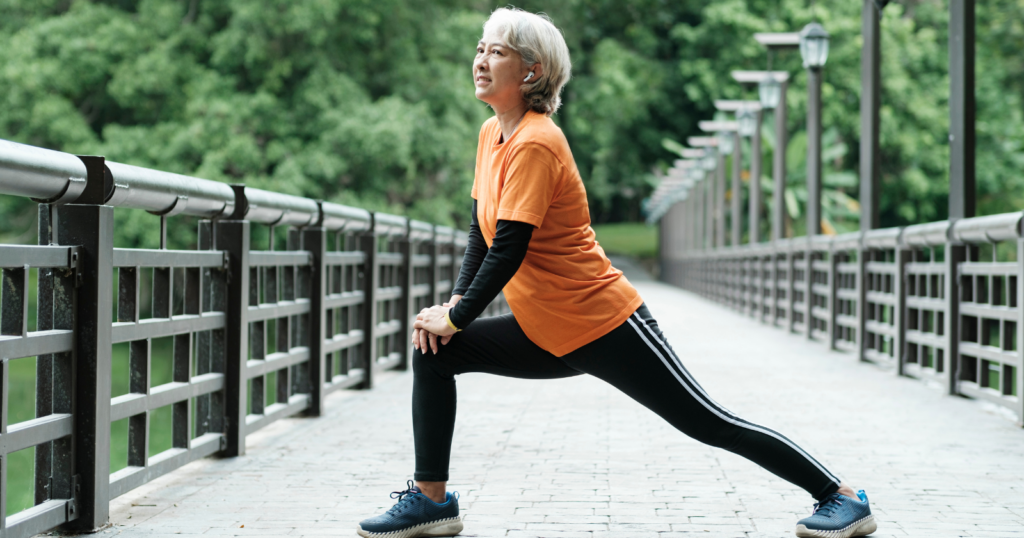
Reducing long periods of immobility is paramount for promoting healthy leg circulation and preventing the development of circulatory issues. Here’s how avoiding prolonged periods of sitting or standing still can benefit leg circulation:
Enhanced Blood Flow: Prolonged immobility, such as sitting for long hours at a desk or standing in one position for an extended period, can impede blood flow in the legs. This stagnant blood flow increases the risk of blood pooling in the lower extremities, leading to discomfort, swelling, and potential circulatory problems. By incorporating movement into your daily routine and avoiding prolonged periods of immobility, you encourage the pumping action of muscles, which helps to facilitate blood circulation and prevent stagnation.
Prevention of Blood Clots: Extended periods of immobility can also increase the risk of developing blood clots, particularly deep vein thrombosis (DVT). DVT occurs when a blood clot forms in a deep vein, usually in the legs. Immobility slows blood circulation, making it easier for blood to pool and clot. These clots can be dangerous if they break loose and travel to other parts of the body, such as the lungs, causing a pulmonary embolism. Regular movement helps to keep blood flowing smoothly and reduces the risk of clot formation.
Muscle Engagement: Movement, even light activity such as walking or stretching, engages the leg muscles and promotes the contraction of blood vessels, aiding in the circulation of blood back to the heart. When you remain stationary for long periods, muscles become inactive, hindering the body’s natural mechanisms for maintaining proper blood flow. By incorporating regular breaks to move and stretch throughout the day, you stimulate muscle activity and support healthy circulation in the legs.
Alleviation of Leg Discomfort: Extended periods of immobility can contribute to leg discomfort, including feelings of heaviness, stiffness, and numbness. These sensations are often indicative of poor circulation and can worsen with prolonged sitting or standing. Taking short breaks to move and change positions can help alleviate these symptoms by promoting blood flow and reducing pressure on the veins in the legs.
Promotion of Overall Health: In addition to benefiting leg circulation, avoiding long periods of immobility promotes overall health and well-being. Regular movement is associated with a myriad of health benefits, including improved cardiovascular health, enhanced mood, and increased energy levels. By incorporating frequent movement breaks into your day, you not only support healthy leg circulation but also contribute to your overall vitality and longevity.
Incorporating regular movement breaks into your daily routine, whether through stretching, walking, or simply changing positions, is essential for promoting healthy leg circulation and overall well-being. By prioritizing movement and avoiding prolonged periods of immobility, you can help maintain optimal blood flow to your legs and reduce the risk of circulatory issues.
Tip #9 – Massage Your Lower Limbs
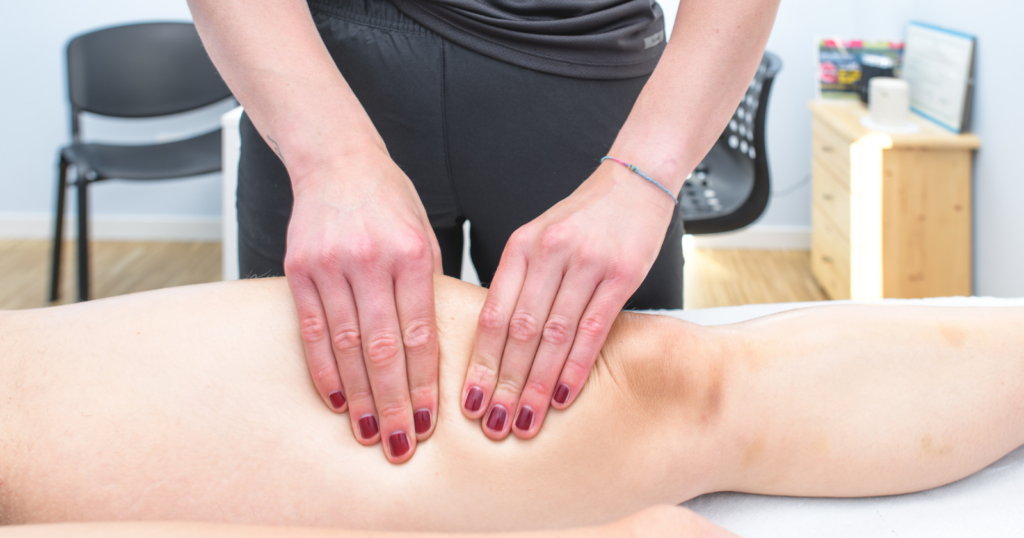
Massaging your lower limbs is a simple yet effective way to promote circulation, relieve tension, and alleviate discomfort in your legs. Here’s how incorporating leg massage into your routine can benefit leg circulation:
Enhanced Blood Flow: Massage techniques, such as kneading, stroking, and compression, can stimulate blood flow in the legs by promoting the dilation of blood vessels and encouraging circulation. This increased blood flow delivers oxygen and nutrients to the muscles and tissues in the legs while aiding in the removal of metabolic waste products, promoting overall vascular health and function.
Reduced Swelling and Fluid Retention: Leg massage helps to stimulate the lymphatic system, which plays a crucial role in removing excess fluid and waste products from the tissues. By gently manipulating the muscles and tissues in the legs, massage can help reduce swelling and fluid retention, alleviating discomfort and promoting better circulation throughout the lower limbs.
Relief from Muscle Tension and Fatigue: Massaging the lower limbs helps to relax tense muscles, release built-up tension, and reduce fatigue. Whether you experience muscle stiffness from prolonged sitting, standing, or physical activity, regular leg massage can provide relief by improving blood flow and promoting muscle relaxation, ultimately enhancing comfort and mobility.
Prevention of Varicose Veins: Varicose veins occur when the valves within the veins weaken or become damaged, leading to the pooling of blood and the formation of bulging, twisted veins. Massage techniques that involve gentle pressure and upward strokes can help improve circulation and reduce the pressure on the veins, potentially preventing the development of varicose veins and diminishing existing symptoms.
Incorporating leg massage into your daily or weekly routine can be as simple as using your hands to knead and massage your lower limbs or using massage tools such as foam rollers or handheld massagers. Aim to spend at least 5-10 minutes massaging each leg, focusing on areas of tension or discomfort. Whether you prefer self-massage techniques or seek the assistance of a professional massage therapist, regular leg massage can be a valuable component of your overall strategy for promoting healthy leg circulation and maintaining optimal lower limb health.
Tip #10 – Don’t Smoke and Manage Stress

Avoiding smoking and effectively managing stress are two additional important strategies for promoting healthy leg circulation. Here’s how these practices can positively impact leg circulation:
Smoking Cessation: Smoking is a significant risk factor for poor circulation and vascular disease. The chemicals in tobacco smoke can damage blood vessels, leading to narrowing and constriction, which impairs blood flow to the legs and other parts of the body. Additionally, smoking increases the risk of developing peripheral artery disease (PAD), a condition characterized by narrowed arteries in the legs, reducing blood flow and causing symptoms such as pain, cramping, and numbness. By quitting smoking, individuals can improve blood flow, reduce inflammation, and lower their risk of developing circulatory issues in the legs.
Improved Oxygen Delivery: Smoking reduces the amount of oxygen that can be carried by the blood, as carbon monoxide from cigarette smoke binds to hemoglobin, the oxygen-carrying component of red blood cells. This can lead to decreased oxygen delivery to the muscles and tissues in the legs, contributing to fatigue, weakness, and impaired healing. By quitting smoking, individuals can improve oxygen delivery to the legs and promote better circulation, supporting overall leg health and function.
Stress Management: Chronic stress can have detrimental effects on cardiovascular health and circulation. When you experience stress, your body releases hormones like cortisol and adrenaline, which can constrict blood vessels and elevate blood pressure, negatively impacting circulation. Prolonged stress can also contribute to unhealthy coping behaviors, such as overeating, sedentary lifestyle habits, and smoking, further exacerbating circulatory issues. By adopting stress-reduction techniques such as deep breathing exercises, meditation, yoga, or engaging in enjoyable activities, individuals can lower stress levels, promote relaxation, and improve circulation to the legs.
Reduced Inflammation: Stress is associated with increased inflammation throughout the body, which can contribute to the development and progression of circulatory disorders. Chronic inflammation damages blood vessels, promotes the formation of arterial plaque, and impairs blood flow, increasing the risk of conditions such as atherosclerosis and peripheral artery disease. By managing stress effectively, individuals can lower inflammation levels, protect blood vessel health, and support optimal circulation to the legs.
Enhanced Overall Well-being: Quitting smoking and managing stress not only benefit leg circulation but also contribute to overall health and well-being. By adopting healthier lifestyle habits, individuals can reduce their risk of cardiovascular disease, improve energy levels, enhance mood, and enjoy a higher quality of life. Prioritizing self-care practices such as smoking cessation and stress management supports not only leg circulation but also promotes holistic health and vitality.
In summary, avoiding smoking and implementing stress management techniques are essential components of a comprehensive approach to promoting healthy leg circulation. By quitting smoking, reducing stress levels, and adopting healthier lifestyle habits, individuals can protect vascular health, improve blood flow to the legs, and reduce the risk of circulatory disorders, ultimately enhancing overall leg function and well-being.
FAQs
Why is good leg circulation important?
Good leg circulation is crucial for maintaining your body’s overall health. It is responsible for delivering oxygen and nutrients to your cells and removing waste products. Poor leg circulation can lead to a range of health problems, including poor vein health, poor skin health, and tissue death. It can also increase your risk of developing blood clots and deep vein thrombosis (DVT).
Is high blood pressure medication associated with poor leg circulation?
High blood pressure medications can sometimes cause poor leg circulation, resulting in swelling, pain, and difficulty walking. However, not all blood pressure medications have this side effect, and it is important to speak with your doctor if you experience any symptoms. In some cases, your healthcare provider may adjust your medication or recommend alternative treatments.
What are some natural ways to increase blood circulation in your legs?
Certain natural remedies can help improve blood circulation in your legs. Some options include drinking green tea, taking ginger supplements, or eating foods rich in omega-3 fatty acids. You can also try using essential oils, such as peppermint or eucalyptus, to improve circulation.
Can you reverse poor circulation?
The good news is, that with lifestyle changes and treatment options, many people see improvement. Quitting smoking, maintaining a healthy diet, and managing high blood pressure and cholesterol can all contribute to reversing circulation problems. For certain health conditions, it’s important to seek a healthcare provider or a vein specialist for personalized vascular treatment.
Parting Words
If you have been experiencing persistent leg circulation problems, it is important to consult with a healthcare professional. There could be an underlying medical condition that needs to be addressed. Treatment may include medication, lifestyle changes, or surgery.
Incorporating simple tips into your daily routine, such as standing up, wearing loose clothing, using compression socks, exercising, and staying hydrated, can help improve blood circulation in your legs. It is important to note that these tips may not work for everyone, and it may take time to see noticeable results.
When it comes to improving blood circulation in your legs, there are plenty of things you can do. Start by adding some of the simple tips found in 5 Simple Tips To Improve Leg Circulation into your daily routine, and you should start to see a noticeable difference.
If you have any additional tips for improving leg circulation, please share them in the comments below. Remember to always consult with a healthcare professional before making any significant changes to your lifestyle or treatment plan.
